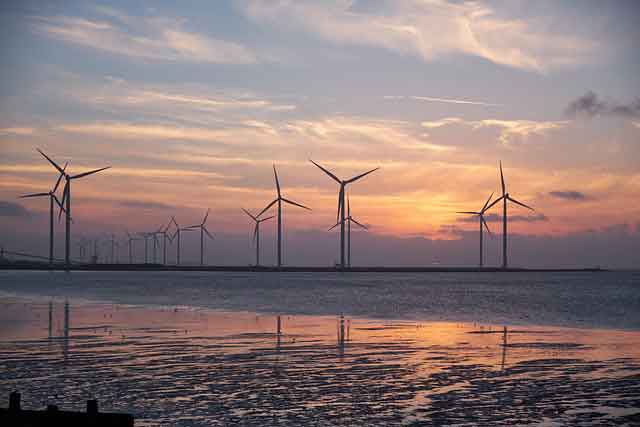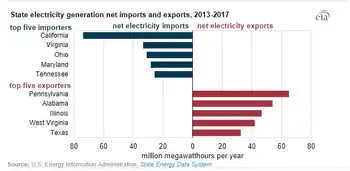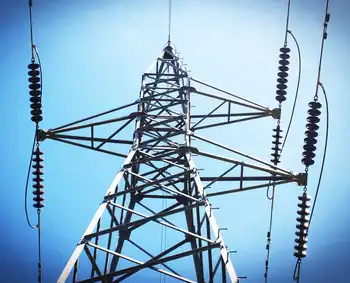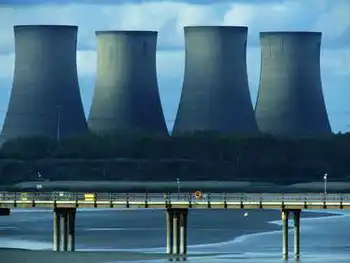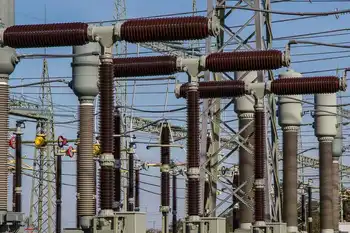New York Renewable Energy Contracts secure 23 projects totaling 2.3 GW, spanning offshore wind, solar, and battery storage under CLCPA goals, advancing 70% by 2030, a carbon-free 2040 grid, grid reliability, and green jobs.
Key Points
State agreements securing 23 wind, solar, and storage projects (2.3 GW) to meet CLCPA clean power targets.
✅ 2.3 GW across 23 wind, solar, and storage projects statewide
✅ Supports 70% renewables by 2030; carbon-free grid by 2040
✅ Drives emissions cuts, grid reliability, and green jobs
In a significant milestone for the state’s clean energy ambitions, New York has finalized contracts with 23 renewable energy projects, as part of large-scale energy projects underway in New York, totaling a combined capacity of 2.3 gigawatts (GW). This move is part of the state’s ongoing efforts to accelerate its transition to renewable energy, reduce carbon emissions, and meet the ambitious targets set under the Climate Leadership and Community Protection Act (CLCPA), which aims to achieve a carbon-free electricity grid by 2040.
A Strong Commitment to Renewable Energy
The 23 projects secured under these contracts represent a diverse range of renewable energy sources, including wind, solar, and battery storage. Together, these projects are expected to contribute significantly to New York’s energy grid, generating enough clean electricity to power millions of homes. The deal is a key component of New York’s broader strategy to achieve a 70% renewable energy share in the state’s electricity mix by 2030 and to reduce greenhouse gas emissions by 85% by 2050.
Governor Kathy Hochul celebrated the agreements as a major step forward in the state’s commitment to combating climate change while creating green jobs and economic opportunities. “New York is leading the nation in its clean energy goals, and these projects will help us meet our bold climate targets while delivering reliable and affordable energy to New Yorkers,” Hochul said in a statement.
The Details of the Contracts
The 23 projects span across various regions of the state, with an emphasis on areas that are well-suited for renewable energy development, such as upstate New York, which boasts vast open spaces ideal for large-scale solar and wind installations and the state is investigating sites for offshore wind projects along the coast. The contracts finalized by the state will ensure a steady supply of clean power from these renewable sources, helping to stabilize the grid and reduce reliance on fossil fuels.
A significant portion of the new renewable capacity will come from offshore wind projects, which have become a cornerstone of New York’s renewable energy strategy. Offshore wind has the potential to provide large amounts of electricity, and the state recently greenlighted the country's biggest offshore wind farm to date, taking advantage of the state's proximity to the Atlantic Ocean. Several of the contracts finalized include offshore wind farm projects, which are expected to be operational within the next few years.
In addition to wind energy, solar power continues to be a critical component of the state’s renewable energy strategy. The state has already made substantial investments in solar energy, having achieved solar energy goals ahead of schedule recently, and these new contracts will further expand the state’s solar capacity. The inclusion of battery storage projects is another important element, as energy storage solutions are vital to ensuring that renewable energy can be effectively utilized, even when the sun isn’t shining or the wind isn’t blowing.
Economic and Job Creation Benefits
The finalization of these 23 contracts will not only bring significant environmental benefits but also create thousands of jobs in the renewable energy sector. Construction, maintenance, and operational jobs will be generated throughout the life of the projects, benefiting communities across the state, including areas near Long Island's South Shore wind proposals that stand to gain from new investment. The investment in renewable energy is expected to support New York’s recovery from the economic impacts of the COVID-19 pandemic, contributing to the state’s clean energy economy and providing long-term economic stability.
The state's focus on clean energy also provides opportunities for local businesses, highlighted by the first Clean Energy Community designation in the state, as many of these projects will require services and materials from within New York State. Additionally, Governor Hochul’s administration has made efforts to ensure that disadvantaged communities and workers from underrepresented backgrounds will have access to job training and employment opportunities within the renewable energy sector.
The Path Forward: A Clean Energy Future
New York’s aggressive move toward renewable energy is indicative of the state’s commitment to addressing climate change and leading the nation in clean energy innovation. By locking in contracts for these renewable energy projects, the state is not only securing a cleaner future but also ensuring that the transition is fair and just for all communities, particularly those that have been historically impacted by pollution and environmental degradation.
While the finalized contracts mark a major achievement, the state’s work is far from over. The completion of these 23 projects is just one piece of the puzzle in New York’s broader strategy to decarbonize its energy system. To meet its ambitious targets under the CLCPA, New York will need to continue investing in renewable energy, energy storage, grid modernization, and energy efficiency programs.
As New York moves forward with its clean energy transition, and as BOEM receives wind power lease requests in the Northeast, the state will likely continue to explore new technologies and innovative solutions to meet the growing demand for renewable energy. The success of the 23 finalized contracts serves as a reminder of the state’s leadership in the clean energy space and its ongoing efforts to create a sustainable, low-carbon future for all New Yorkers.
New York’s decision to finalize contracts with 23 renewable energy projects totaling 2.3 gigawatts represents a bold step toward meeting the state’s clean energy and climate goals. These projects, which include a mix of wind, solar, and energy storage, will contribute significantly to reducing the state’s reliance on fossil fuels and lowering greenhouse gas emissions. With the additional benefits of job creation and economic growth, this move positions New York as a leader in the nation’s transition to renewable energy and a sustainable future.
Related News






